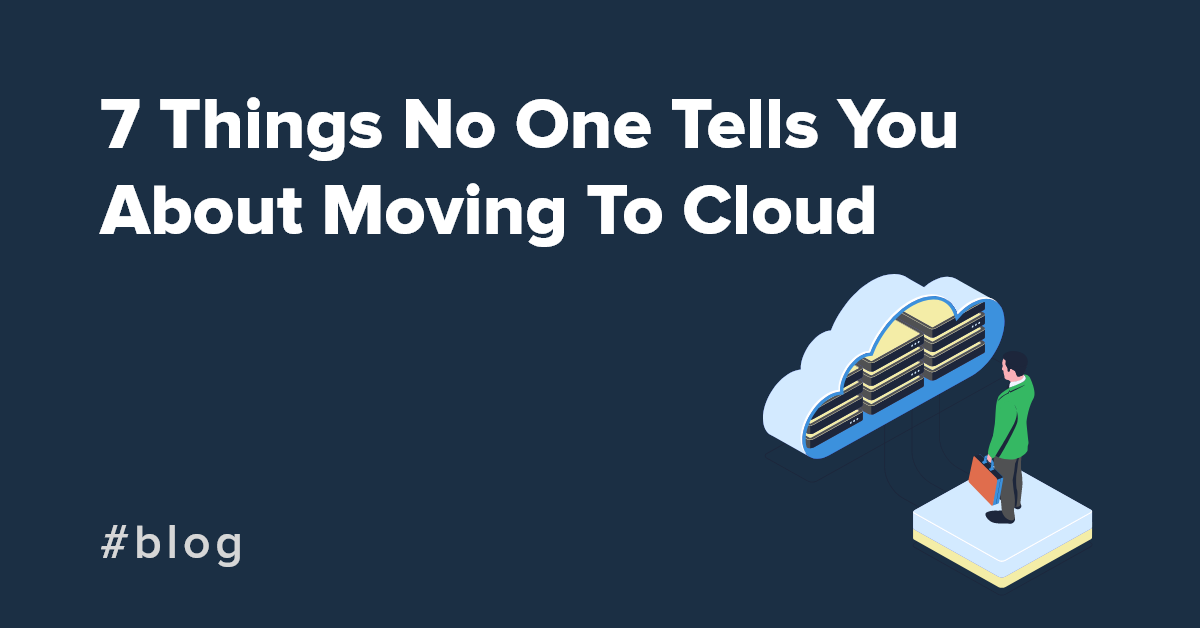Moving your data and applications to the cloud can remove the need to manage low level infrastructure, enable higher availability, and allow for scaling - all without significant up front cost. But a smooth cloud migration needs careful planning.
Once you’ve decided on a cloud migration, some of the things you also need to be considering include:
- What you’re going to move
- How you’re going to adapt your applications for the cloud
- Which cloud vendor you’re going to go with
- How to plan your data storage
If you’re planning on moving to AWS, Azure, Google Cloud, or a similar cloud platform, here’s some tips for a smoother transition.
And if you want more details, download our ebook The Guide to Migrating Data Workloads to the Cloud.
1. Don’t go for multi-cloud
Accepted wisdom says to avoid vendor lock in. But deliberately spreading your usage across different cloud providers can be more hassle than it’s worth. Each provider's services are designed to work together seamlessly, but even minor differences in behavior between similar services on each platform can be hard to work around.
2. But accept that you might have to go multi-cloud
Different cloud providers have different strengths and weaknesses. And it’s not uncommon for individual teams or departments to choose differently based on what is important to them. For instance, one team might opt for Microsoft’s Azure while a more technical team might prefer AWS.
3. Estimating cost in advance is almost impossible
Cloud pricing can be the single biggest trap you face. Prices like $0.001 look great on paper, but they quickly add up and it’s easy to lose track of what you get charged for. Accept that it’s hard to estimate the performance you need in advance and that you’ll probably only have a ballpark estimate to begin with. And make sure you’re monitoring, testing and resizing regularly to get the right balance between performance and cost.
4. It really pays to be on top of your billing and consumption reports
Keeping a close eye on your consumption reports is essential to prevent costs spiralling. With services running on autopilot there’s a tendency for cost to creep up without you realizing it. Setting up billing alarms and making sure there’s someone on your team whose job it is to understand and monitor usage will help control bills.
5. Tidy up early and often
Services that the cloud provider charges for even when they’re inactive are billing traps. They’ll quietly increase your cost - sometimes for months or even years - until you learn to detect and clean them up. Managing your user permissions and account can help monitor what you’re actually using (versus what you’re being charged for).
6. Regions are not always equal
Make sure that the resource you need is available in the region you’re planning on using. Documentation might not always tell you but, for example, some instance types in AWS are not available in some availability zones. And temporary unavailability can be an issue - when capacity is reached you might not be able to deploy the services you need.
7. Switching to cloud isn’t instant
If you’re used to being largely on-premise, migrating data workloads to the cloud will probably take longer than you think. You probably don’t have the right cloud experience in your team, and planning how you’re going to refactor your processes and applications for the cloud takes time to do properly. Accept you’ll likely have a period where you’re having to manage both on-premise and cloud systems.
Remember: the cloud is not as magic as they want you to think
To find out what's really involved in migrating to the cloud, read the Guide to Migrating Data Workloads to the Cloud and discover some of the things to watch out for in your cloud migration.
Read more:









